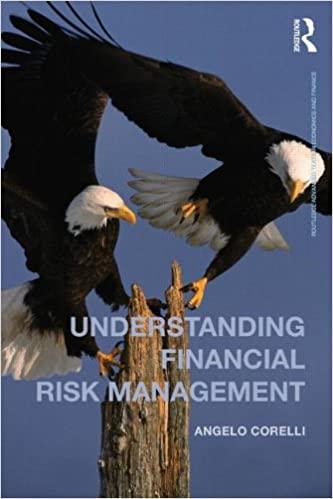Question
1. Suppose Kate buys a house for $300,000 using a downpayment (equity) of $30,000 and a mortgage of $270,000. Suppose also that Kate has an
1. Suppose Kate buys a house for $300,000 using a downpayment (equity) of $30,000 and a mortgage of $270,000. Suppose also that Kate has an nonrecourse clause that she can leave the house without paying her debt in full if the house is worth less than her debt. :
(a) (Leverage) Suppose that it is costless to buy and sell houses and the interest rate is zero. Measure the return to equity as 100(Value of Asset - Repayment of loan- Equity)/Equity. Write down the value of equity in the house and the return to equity if
The value of the house rises by 15% to $345,000
The value of the house falls by 15% to $255,000
(c) Now suppose that Kate had put down a downpayment of $60,000 again write down the value of equity in the house and the return to equity if
The value of the house rises by 15% to $345,000
The value of the house falls by 15% to $255,000
(d) (Contrasting Interests of borrower and Lender) Now suppose that Kate has a nonrecourse clause that she can leave the house without paying her debt in full if the house is worth less than her debt. Would a risk averse lender prefer that Kate to put down a $60,000 or $30,000 deposit?
2. Consider again the case where Kate buys a house for $300,000 using a downpayment (equity) of $30,000 and a mortgage of $270,000. Suppose now that she receives an inheritance of $50,000 and subsequently the house is hit by aood damage reducing its value to $240,000 and that the repairs to mend the damage will cost $50,000 (after which the house will be worth $300,000 again). Again suppose that Kate has an nonrecourse clause that she can leave the house without paying her debt in full if the house is worth less than her debt.
(a) Will Kate undertake the work ?
(b) Would Kate undertake the work if she owned the house completely i.e. no mortgage 100% equity
3. Consider again the case where Kate buys a house for $300,000 using a downpayment (equity) of $60,000 and a mortgage of $240,000. Again suppose that Kate has an nonrecourse clause that she can leave the house without paying her debt in full if the house is worth less than her debt. Suppose now that she receives an inheritance of $50,000. and subsequently the house is hit by aood damage reducing its value to $240,000 and that the repairs to mend the damage will cost $50,000 (after which the house will be worth $300,000 again)
(a) Will Kate undertake the work if she paid for the repairs out of her own savings ?
4. Now again back to the case where Kate has a mortgage of $270,000 suppose that there is a aood which devalues Kateis house so that it now worth only $240,000 and that the bank oers to lend Kate $50,000 repairs to mend the damage after which the house will be worth $300,000 or a risky remodelling which may leave the house worth $240,000 with a 50% probability or worth $330,000 with a 50% probability. Which investment will Kate undertake again assuming that Kate has an nonrecourse clause that she can leave the house without paying her debt in full if the house is worth less than her debt?
Step by Step Solution
There are 3 Steps involved in it
Step: 1

Get Instant Access to Expert-Tailored Solutions
See step-by-step solutions with expert insights and AI powered tools for academic success
Step: 2

Step: 3

Ace Your Homework with AI
Get the answers you need in no time with our AI-driven, step-by-step assistance
Get Started


